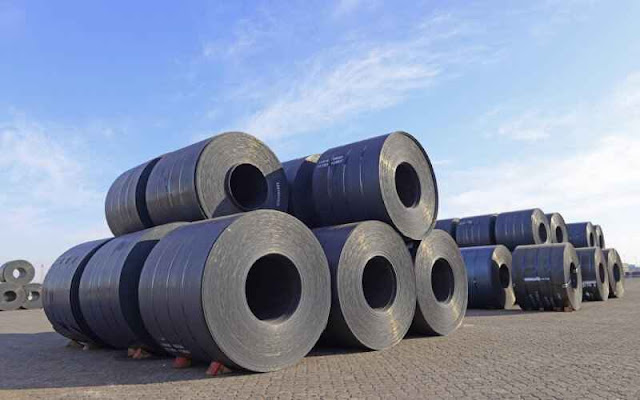What Do You Mean By Hot-Rolled Steel?
You must be aware of the
terms 'Hot-rolled' and 'Cold-rolled'. This material is derived from the same
process that is manufactured by pre-engineered
building manufacturers in India. The hot-rolled steel has specifications
that make it perfect for several applications. It is the cheapest form of steel
and has similar tolerance as cold-rolled steel.
A layer of bluish iron oxide
forms over the surface of the hot-rolled steel due to the presence of an
elevated temperature. Due to this, certain activities like the wielding for
removing the mill scale become easier. It is found in several shapes and sizes
such as bars, sheets, plates, I-beams, and channels.
The reason why pre-engineered building manufacturers
in India use hot-rolled steel
These steel sections are
manufactured by the rolling mills for the purpose of being structural members.
They have cross-sectional shapes that are fabricated to the point of erection;
hence the name. Given below is a list of the advantages and disadvantages of HR
steel.
Advantages:
·
They can be made
easily through the heating and cooling process.
·
It is cheaper
than cold-rolled steel and is made by the best steel companies in India.
·
They cool down
at room temperature. Thus, there is no hassle after the production process.
·
It is free from
any kind of internal stress and can be used through the quenching or the
work-hardening process.
·
There are
different shapes of hot-rolled steel. These include UC, UB, SHS, RHS, flats,
etc.
Disadvantages:
·
There might be
certain dimensional disfigurations due to the heating and cooling process.
·
It will have a
rough texture which is to be removed before it is coloured.
·
A few imperfect
distortions.
Process of preparing the hot-rolled plate
This process begins with the
pre-engineered building manufacturers in India who start by casting large steel
slabs from the liquid metal. This slab or billet is heated at a temperature of
1700°F and then transformed into a flat sheet using a set of rollers. These
rollers would then turn these sheets into coils. The thickness of the billets
can vary thus, they are prepared accordingly before they are allowed to cool
down.
The best steel suppliers in Chennai claim that
hot-rolled steel cools at room temperature. Thus, the final piece might shrink
a little and have its sharp edges turned around on its own. This surface has
sales throughout and is now finally ready to be shipped.
The process of Cold Rolling
After the hot-rolled steel
is cooled down, it does not automatically transforms into a cold-rolled steel
plate. There are yet a few steps to be followed for the final product. This
stage is known as the 'cold forming'. Here, the plate is re-rolled at the same
room temperature and then produced into coils, bars, and tubes by the
pre-engineered building manufacturers in India.
Even more additional steps
like drawing, grinding, and turning are done to the finished product. Work
hardening of the metal turns the metal hard and increases its strength through
crystalline defects. A cautionary part that is kept in mind by the best steel
companies in India while producing the product is that the heat must be
relieved or the product may wrap.
The best steel suppliers in Chennai introduced a new set of welded sections used in the plates due to the development in welding. The open web sections and the castellated beams were developed with the rapid increase in the use of welding.



.jpg)
Comments
Post a Comment